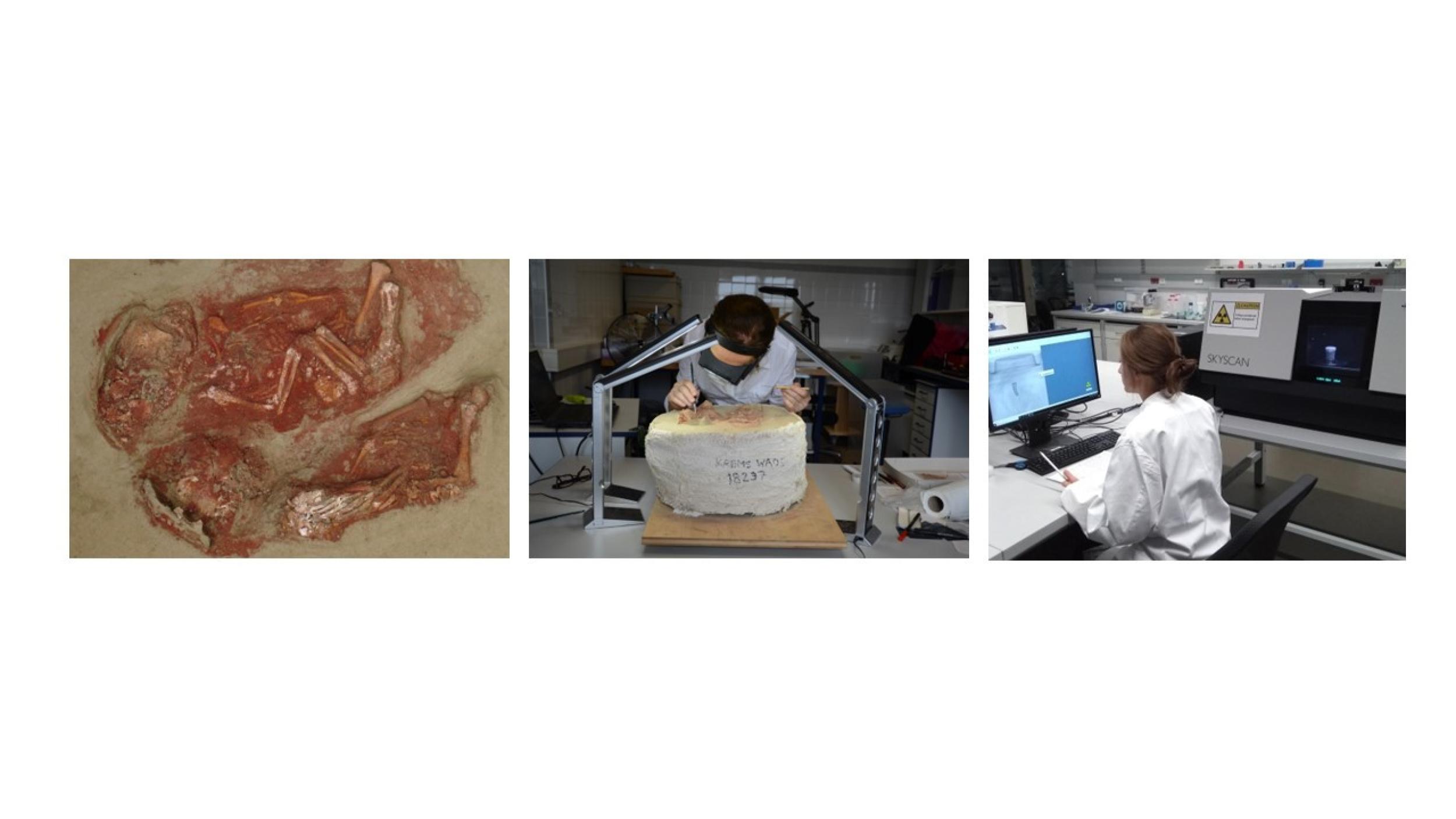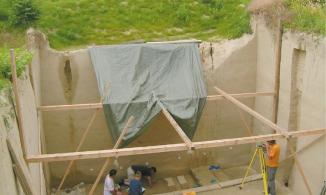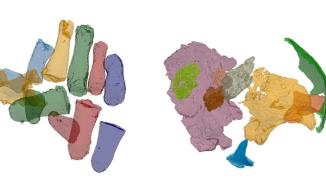
Digitising and reconstructing an Upper Palaeolithic infant twin burial from Krems-Wachtberg
Aims of the project
The project aims to digitize and reconstruct the 31,000-year-old twin burial from Krems-Wachtberg. Using a µCT scanner, the individual skeletal elements are scanned to create 3D models and reconstruct the find situation of the babies. A database is created to archive and share the produced data. The virtual reconstruction will provide insights into the behaviour of early humans in Lower Austria and protect the original bones from damage. The results of the project will be published and a concept will be developed to make the reconstructions accessible to museum visitors in Lower Austria and Vienna (NHM).

The site of Krems-Wachtberg
Archaeological excavations were carried out at the site of Krems-Wachtberg between the years of 2005-2015. A well-preserved archaeological horizon of a Palaeolithic hunter-gatherer society with characteristic features and finds from the Palaeolithic, more specifically the Gravettian period, was discovered. The 31,000-year-old finds include stone tools, art objects, pieces of jewellery, and bones from hunted animals. The discovery of two separate infant burials caused a sensation.

Twin Burial
During the first excavation campaign in 2005, the burial of two infants (Burial 1) was discovered under a mammoth scapula. DNA analyses showed that the babies were male identical twins. Examinations of bone and tooth development and the presence of a breastfeeding signal showed that one of the babies (individual 2) died at or shortly after birth, while the other (individual 1) lived for about six to seven weeks. In the following year of the excavation, another grave with an approximately three-month-old infant (Burial 2) was found in close proximity to Burial 1.
Recovery and uncovering in the laboratory
Burial 1 was recovered as a block in 2005 and then stored in a climate-controlled facility at the Natural History Museum Vienna. With the aim of being able to excavate the burial under controlled laboratory conditions and without time pressure, the bones were then uncovered in 2015. A high-precision surface scanner was used to document each stepf of the excavation in 3D to create the best possible conditions for a future 3D reconstruction of the burial.

Pilot project
In a pilot project in 2018, parts of the skeleton of individual 2 (left hand and skull) were μCT-scanned and the bones were virtually cleaned from adhering sediment that had remained on the fragile original objects. With the 3D models of the bones and the surface scans of the excavation, parts of the burial could be virtually reconstructed. In addition, a prototype database was created to organize and archive the produced data, the scans from the excavation, and data for museological purposes.
The team
The project is a collaboration of the Karl Landsteiner University (KLU), the University for Continuing Education Krems (UWK), the Natural History Museum Vienna (NHM) and the Austrian Archaeological Institute of the Austrian Academy of Sciences (OeAW).
Austrian Academy of Sciences
Austrian Archaeological Institute

Science Research Lower Austria
Literature
- Einwögerer, T., Friesinger, H., Händel, M., Neugebauer-Maresch, C., Simon, U., Teschler-Nicola, M., 2006a. Upper Palaeolithic infant burials. Nature. 444, 285.
- Einwögerer, T., Händel, M., Simon, U., 2006. Die Fortsetzung der Ausgrabungen an der Gravettienfundstelle Krems-Wachtberg 2006. Das Waldviertel. 55. 428-433.
- Einwögerer, T., Simon, U., Händel, M., 2008. Neue Gravettienfunde vom Wachtberg in Krems an der Donau. Das Waldviertel. 57, 171–175.
- Einwögerer, T., 2006. Stadt Krems an der Donau, KG Krems. Fundberichte aus Österreich, Bd. 44/2005, S. 450-452.
- Einwögerer, T., 2017. Krems-Wachtberg, Ein Fundplatz des mittleren Jungpaläolithikums (Pavlovien) in Niederösterreich. In: Pieler, Franz; Trebsche, Peter (Hrsg.), Beiträge zum Tag der Niederösterreichischen Landesarchäologie 2017 Festschrift für Ernst Lauermann (Tag der Niederösterreichischen Landesarchäologie 2017) In Reihe: Katalog des Niederösterreichischen Landesmuseums N. F. 541 Asparn/Zaya 2017, S. 81-93.
- Händel, M., 2021. Assessing the Gravettian occupation floor at Krems-Wachtberg, L´Anthropologie 125.
- Einwögerer, T., Simon, U., 2008. Die Gravettienfundstelle Krems-Wachtberg. Archäologie Österreichs (19/1), S. 38-42
- Teschler-Nicola, M., Fernandes, D., Händel, M. et al., 2020. Ancient DNA reveals monozygotic newborn twins from the Upper Palaeolithic. Commun Biol 3, 650.




